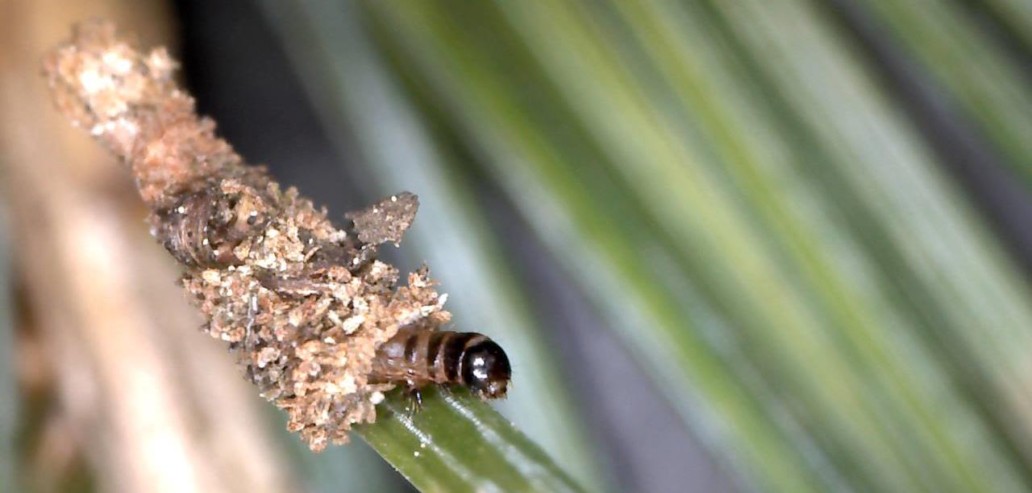How Much Damage Can A Bagworm Really Do?
Well let me tell you folks … a lot. I’ve seen very mature Cedars turn deathly brown and Maples with completely defoliate. These little guys mean business.
First, let’s talk a little about the insect itself. The bagworm, Thyridopteryx ephemeraeformis, is a very interesting landscape pest. The most common observation is the small carrot-like shaped bag that they construct as they feed. The bags are composed of spun silk, plant debris, bits of bark, etc. and are most often seen hanging in evergreen, however, many deciduous species also make for a tasty snack. The bags protect the destructive larvae from the environment, acting like an umbrella, making it very difficult to control. As the worm continues feeding, growing inside, the bag enlarges in size. If disturbed, the bagworm will simply retreat back into the bag for protection.
The female will remain in the bag her entire life, only emerging partially to feed and crawl, if necessary, to a preferred host. She does not pupate into a moth as the male, nor does she exit the bag to mate. After feeding slows, the adult male will mature into a bee-like moth with clear wings and a furry body, and emerge to mate. After mating and before her death, 300-1,000 eggs are deposited into the female’s body. Those eggs will overwinter, protected from the harsh environment by the deceased female’s body and bag, hatch in the spring and the larvae will crawl from the bag by a string of silk, that will blow the new babies to other host speciais…and the cycle starts all over. Thank goodness, there’s only one generation each year.
The actual damage to trees and shrubs is caused when the caterpillar feeds on the foliage. In severe cases, these caterpillars can decimate a tree, causing severe, if not complete defoliation, which often results in death. This is particularly problematic on evergreens because, once damaged, needles are not fast to regrow, leaving the tree unable to photosynthesize and make food in order to survive.
Bagworms are difficult to control because they are often unnoticed until the bags are seen. Mature larvae are said to pupate early if pesticides are detected on plant foliage, another talent this creature holds. Although difficult and time consuming, one of the best ways to control bagworms is to handpick and destroy each bag as they are seen, in order to prevent new babies in the spring. The silk threads that hold the bag together are rather strong, therefore, a pair of scissors might be needed for removal.
If using chemicals, they should be applied when the bagworms are small. Bacillus thuringiensis (Bt) as is relatively effective but must be eaten to cause mortality, as is Spinosad. Both are organic and completely safe to humans and pets. Both are sold in a sprayable formulation, which is especially helpful if the bags are up high and cannot be manually removed. The caterpillars will ingest the treated foliage, which attacks the stomach lining, causing death within a couple of days. Even though the chemical doesn’t kill the bagworm immediately, it stops feeding within hours of ingestion.
There are many additional chemical control ‘drop down’ options that can be utilized but these sprays must be applied before the bagging begins, otherwise the treatment is pointless. Timing is critical due to the unique survival techniques of the bagworm.
What a crazy life…
Amy Dismukes
Amy is the Horticulture Extension Agent for Williamson County. She is housed at the UT/TSU Extension office, which is located within the Williamson County Ag Expo Park in Franklin, TN. Amy also works with the Master Gardeners. This column includes research-based recommendations from Tennessee State University and the University of Tennessee. Extension is committed to affirmative action, equal opportunity and the diversity of its workforce. Educational programs serve all people regardless of race, color, age, sex, religion, disability, sexual orientation, or national origin.
